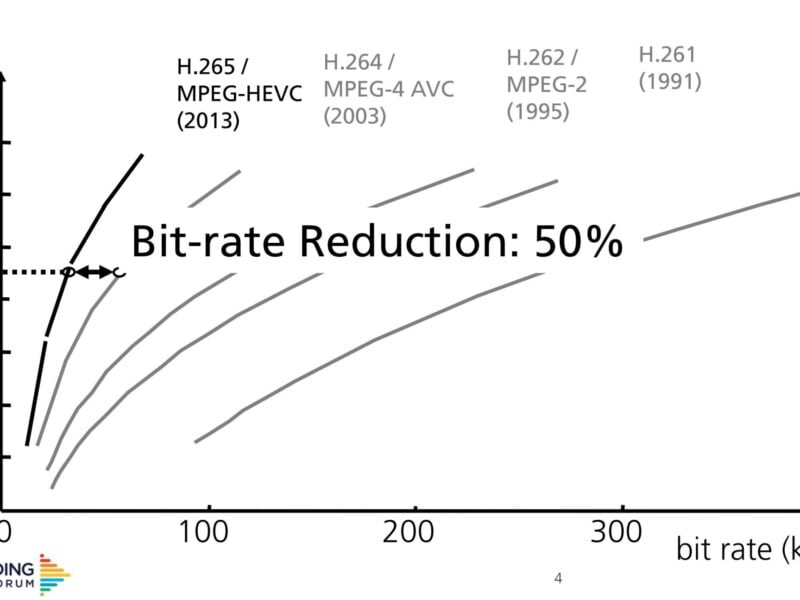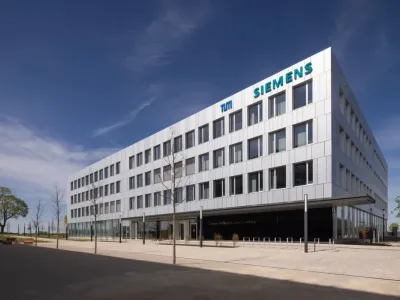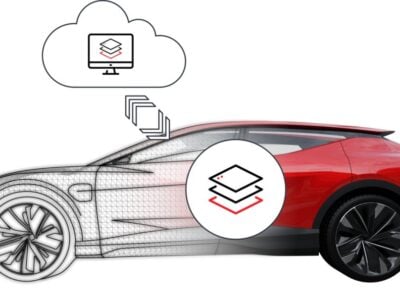
H.266 embedded video codec sees licensing split
The H.266 video compression standard has been developed with a new industry body that is warning against repeating the licensing problems of the past.
The H.266 Versatile Video Coding (VVC) standard reduces data rates by half over the current H.265 HEVC technology. This is designed to work with 4K and 8K ultraHD video and opens up high dynamic range and omnidirectional 360° video transmission and storage. However the developers of the standard are warning against the current factured licensing environment.
The H.266 VVC standard development was led by Fraunhofer HHI in Germany along with Apple, Ericsson, Intel, Huawei, Microsoft, Qualcomm and Sony.
“After dedicating almost three years toward this standard, we are proud to have been instrumental in developing H.266 VVC,” says Benjamin Bross, head of the Video Coding Systems group at Fraunhofer HHI and editor of the +500-page standard specification. “Because of the quantum leap in coding efficiency offered by H.266 VVC, the use of video will increase further worldwide. Moreover, the increased versatility of H.266/VVC makes its use more attractive for a broader range of applications related to the transmission and storage of video.”
“If you consider that Fraunhofer HHI already played a key role in the development of the previous video coding standards H.264 AVC and H.265 HEVC, then we are happy with the fact that more than 50 percent of the bits on the Internet are generated by a Fraunhofer HHI technology,” adds Dr. Detlev Marpe, head of the Video Coding and Analytics department at Fraunhofer HHI.
The current H.265 HEVC standard requires around 10Gbytes of data to encode a 90-min UHD video. With H.266, only 5Gbytes is needed. The new standard is particularly beneficial when streaming 4K or 8K videos on a flat screen TV.
The H.264 Advanced Video Coding (AVC) and H.265 HEVC standards are used in more than 10 billion end devices, processing over 90% of the total global volume of video bits. However there are over 1500 known patents on HEVC with three patent pools organised by MPEG LA, Velos Media, HEVC Advance, and some technology companies are outside of all three. This can make it difficult to fully license an implementation.
This licensing situation for HEVC has been unhelpful to adopters, say the developers of VVC, who have set up their own, fourth industry body. They fear early adoption of VVC could be held back by a lack of clear licensing, especially for streaming, This led to other codecs developed specifically for streaming.
The 30 members of the new body, called Media Coding Industry Forum (MC-IF), aim to set up a uniform and transparent licensing model for H.266/VVC based on the FRAND principle (i.e., fair, reasonable, and non-discriminatory).
The chips required for the use of H.266 VVC, such as those in mobile devices, are currently being designed. The full codec has already been demonstrated on an 8 core Intel processor and a basic set of playback capabilities on a quad core ARM processor.
“This autumn Fraunhofer HHI will publish the first software (for both encoder and decoder) to support H.266 VVC,” said Dr. Thomas Schierl, head of the Video Coding and Analytics department at Fraunhofer HHI.
Related articles
- 4K VIDEO PROCESSOR OFFERS HEVC COMPRESSION AT LOW POWER
- REAL-TIME SERVER APPLIANCES TARGET LIVE VIDEO STREAMING
- GOOGLE-LED GROUP PREEMPTS HEVC
- EUROPE AIMS TO BOOST 4K ULTRA HD TV WITH FIRST HEVC BROADCAST
 If you enjoyed this article, you will like the following ones: don't miss them by subscribing to :
eeNews on Google News
If you enjoyed this article, you will like the following ones: don't miss them by subscribing to :
eeNews on Google News




